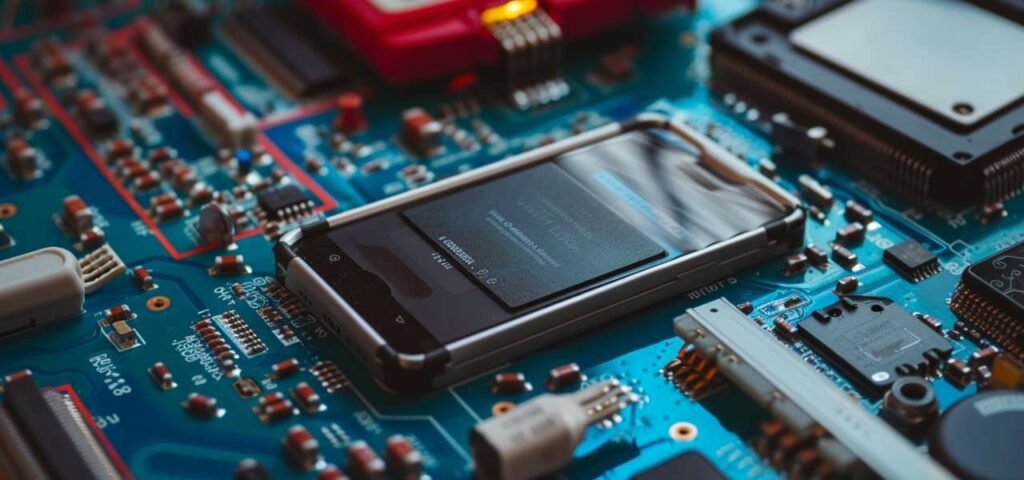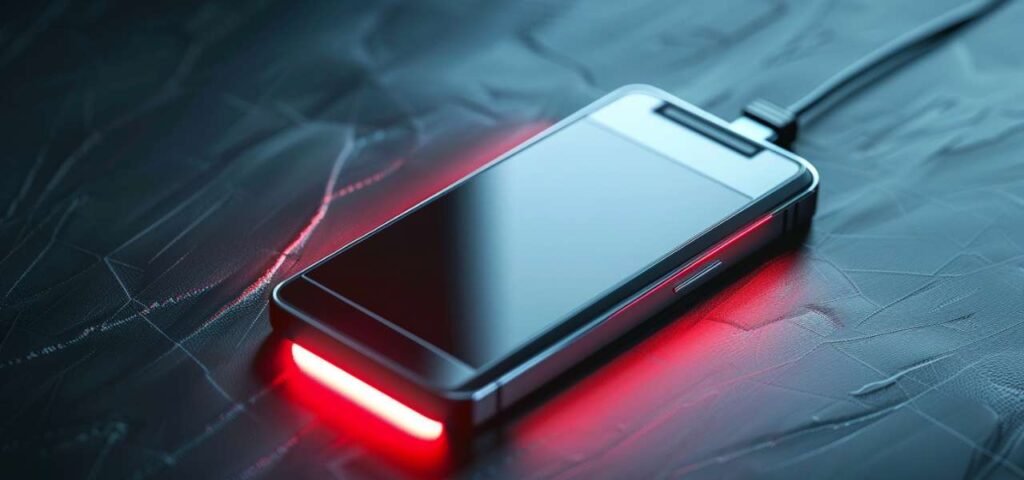1.What is a lithium battery for mobile phones?
A lithium battery for mobile phones mainly consists of plastic housing upper and lower covers, lithium battery cells, a protection circuit board (PCB), and a resettable fuse (polyswitch). Some manufacturers also include components such as NTC thermistors, identification resistors, vibration motors, or charging circuits. Lithium batteries are durable goods, so they are not fragile, and there’s no need to equip them with expensive original chargers. Generally, a branded standard charger priced at around 15-20 yuan is sufficient, eliminating the need for a direct charger that depends on the phone’s restrictions.
2.Functions of lithium batteries for mobile phones:
Lithium battery cells: Provide rechargeable power.
Protection circuit board (PCB): Prevent overcharging, over-discharging, and short circuits.
Resettable fuse (PTC): Acts as a thermal protection device and provides secondary protection after the protection circuit board fails.
Resettable fuse (NTC): Negative temperature coefficient thermistor, senses the internal temperature of the battery, providing low-temperature protection.
Identification resistor: Identifies original batteries; non-original batteries cannot be used.
Automatic reserve emergency power.

3.Advantages and disadvantages of lithium batteries for mobile phones:
Advantages of lithium batteries for mobile phones:
High energy density: Lithium batteries have a high storage energy density, currently reaching 460-600Wh/kg, about 6-7 times that of lead-acid batteries.
Long service life: Lithium batteries can last for over 6 years, with lithium iron phosphate batteries used with 1CDOD achieving up to 10,000 cycles.
High rated voltage: The single-cell operating voltage is 3.7V or 3.2V, approximately equal to the series voltage of three nickel-cadmium or nickel-metal hydride batteries, making it easy to form battery packs.
High power handling capability: Lithium batteries, especially lithium iron phosphate batteries used in electric vehicles, can handle 15-30C charge and discharge currents, enabling high-intensity startup acceleration.
Low self-discharge rate: Lithium batteries have a very low self-discharge rate, typically below 1% per month, which is less than 1/20th of nickel-metal hydride batteries.
Light weight: Lithium batteries weigh about 1/5-6 of lead-acid products of the same volume.
Strong temperature adaptability: Lithium batteries can be used in environments ranging from -20°C to 60°C and can be processed to be usable even in -45°C environments.
Environmentally friendly: Lithium batteries do not contain or generate any toxic or harmful heavy metal elements or substances during production, use, or disposal. They also consume minimal water during production, making them advantageous for water-scarce countries like China.
Disadvantages of lithium batteries for mobile phones:
Poor safety: Lithium primary batteries are prone to safety risks, including the risk of explosion.
Low current discharge capability: Lithium cobalt oxide batteries cannot handle high-current discharges well, leading to poor safety.
Need for protection circuits: All lithium batteries require protection circuits to prevent overcharging, over-discharging, and short circuits.
High production requirements and costs: Producing lithium batteries requires high production standards and is costly.
Variable charging times: Lithium battery charging times can vary.

4.Usage methods for lithium batteries for mobile phones:
Chargers are available in fast (approximately 2-3 hours) and slow (approximately 10 hours) charging modes. If you have multiple batteries, it’s better to choose fast charging.
Additionally, due to the characteristics of lithium batteries, there’s no need for discharging or overcharging operations. The battery’s lifespan depends entirely on the amount of effective charging time. In other words, even if you only use half the battery before recharging, it won’t affect the battery’s lifespan.
(1) Understanding memory effect:
The memory effect refers to the reversible degradation of a battery’s performance, which can be restored after degradation. It’s often associated with nickel-cadmium batteries but is less of an issue with modern nickel-metal hydride and lithium-ion batteries.
(2) Does the battery need activation?
Yes, batteries need activation, but this is done during manufacturing and not by the user. Manufacturers activate batteries through specific charging and discharging cycles to ensure they reach their required capacity. However, if batteries have been stored for a long time before use, it’s recommended to perform several full charge and discharge cycles to eliminate electrode passivation and maximize capacity.
5.Maintenance of lithium batteries for mobile phones:
When using and maintaining lithium batteries for mobile phones, adhere to the following principles:
Avoid fully discharging the battery and recharge it regularly.
Store batteries in a cool place, avoiding extremes of temperature such as refrigerators or hot cars. If storing for an extended period, charge the battery to around 40% before storage.
If using a fixed power source most of the time, remove the battery and store it in a cool place.
There’s no need to purchase spare batteries for storage, as this would waste the battery’s capacity. Instead, use batteries as needed and store them appropriately.
Batteries are meant to be used, so focus on using them reasonably and properly storing them to maximize their utility.

